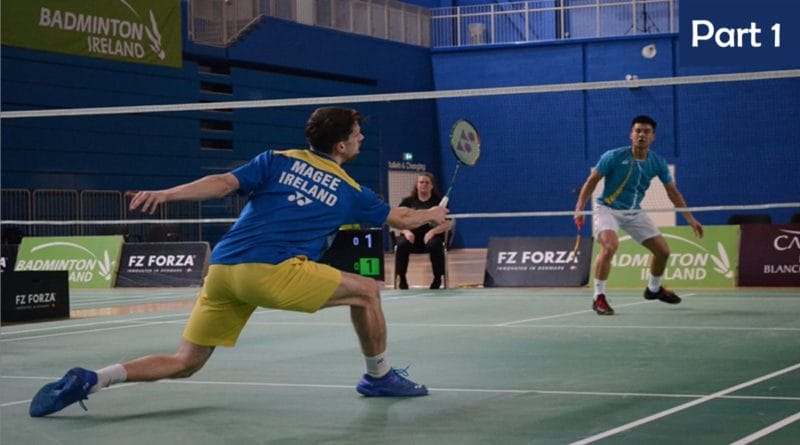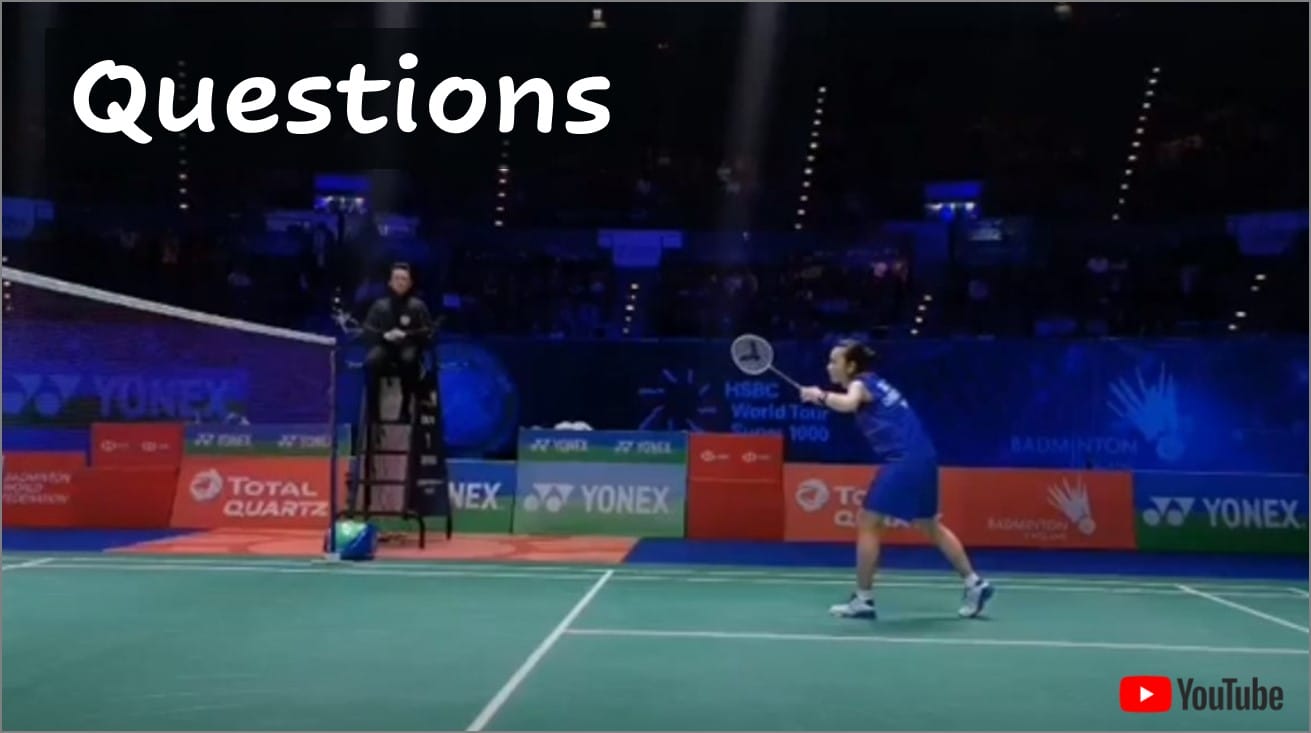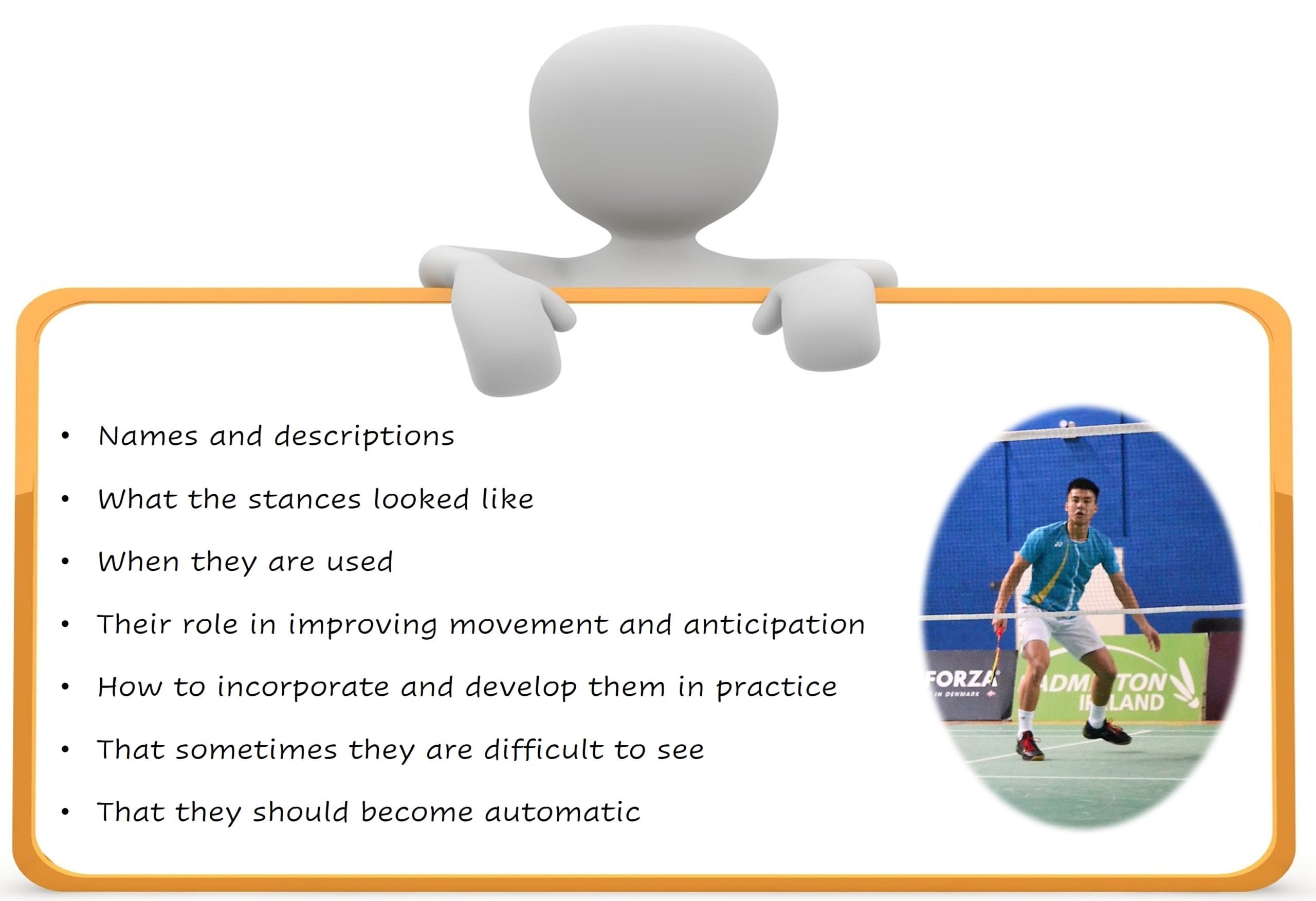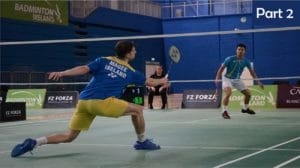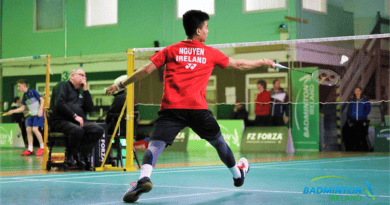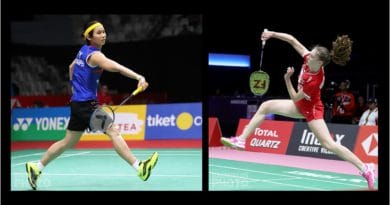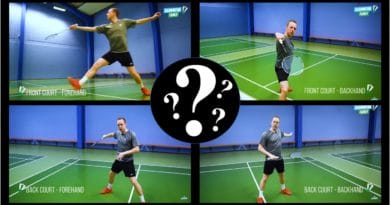The coaches guide to badminton stances Part 1
What happens between strokes is as important as the shots that are played
Badminton stances are an essential element of movement skills & are often misunderstood
They are the anticipatory movements made by players before the opponent stroke
I was shocked, they were right in front of my eyes, but I had never realised it
Then it all became clear
I’d been coaching movement skills (in singles) but never thought about stances and certainly not included them in my work. I thought that starting and moving from one stroke to another was only about using a pretension (a split-step), but I was wrong, it was far more than that.
These badminton stances were unknown to me before I met Roger Mills, my mentor some 30 years ago.
It was very exciting when I learned that there are 3 Stances that players use during their movements around the court. Not always, but a large majority of the time.
Each of them has a purpose, depending on a tactical thought/decision by the player. Some of the purposes are very obvious (when I was shown what to look for) and others are more subtle. They are all anticipatory and taken up before the opponent strikes the shuttle.
I didn’t know what the players were anticipating, why were they adopting these different positions
It was the thoughts behind the choices that I discovered were critical, but what were they?
I discovered that it wasn’t all about standing and starting in a square position! Always using a square starting stance will limit movement skills. Hopefully, this isn’t what your players actually do in a game.
Roger expertly explained all I needed to know about the stances used in badminton. Immediately I started to see these ready positions, not only at the start of rallies but many times within the rallies. Now I knew what to look for, started to become became clear.
If you want to watch a video and answer some questions click on this image. You can then see my analysis.
Warning
Once you start to see the stances, you will see them everywhere!
That is just what happened to me. I knew they needed these essential components to help their movement skills. However, I still had no idea about how to introduce these to players. It all seemed so complex.
What practices should I use, what suggestions should I make, and how could I judge development
– – – – – – – – – – – – – – – – – – – – – – – –
Over the next few years, I started to understand
How I learned
- It took me a while to recover from realising how much I’d been missing and the length of time I’d not been helping my players with these stances
- Once I was over this, I then struggled with how and when to introduce stances to the players
- Then I struggled again to stop talking about the ‘Technical’ aspects with players and decided I needed to know how to introduce and develop them tactically
- It was easier when coaching singles (rather than doubles) as the time between strokes and the fact that they are only 2 players made for fewer variations and more ‘repeatable’ movements
- Finally, I’m still working on how to move players from ‘knowing’ to ‘doing’ so that they claim that they don’t use them or ‘hey, it’s obvious, that’s why I stand like that!’
If you have had a similar journey discovering Badminton Stances please call me and let’s start talking
– – – – – – – – – – – – – – – – – – – – – – – –
There is so much information that it will be split into 3 posts
Parts 2 and 3 will be coming soon
.. The day I was introduced to badminton stances (click here to read more)
1. Why use them?
2. There are 4 of them
3. When are they used (including the Forward vs Backward attacking stance debate)
4. Most are anticipatory
5. Encourage autonomous movements (be wary of overemphasising Technical elements)
6. How to allow for and include in practice
7. Early introduction
8. Practice to forget
– – – – – – – – – – – – – – – – – – – – – – – –
1) Why use Stances?
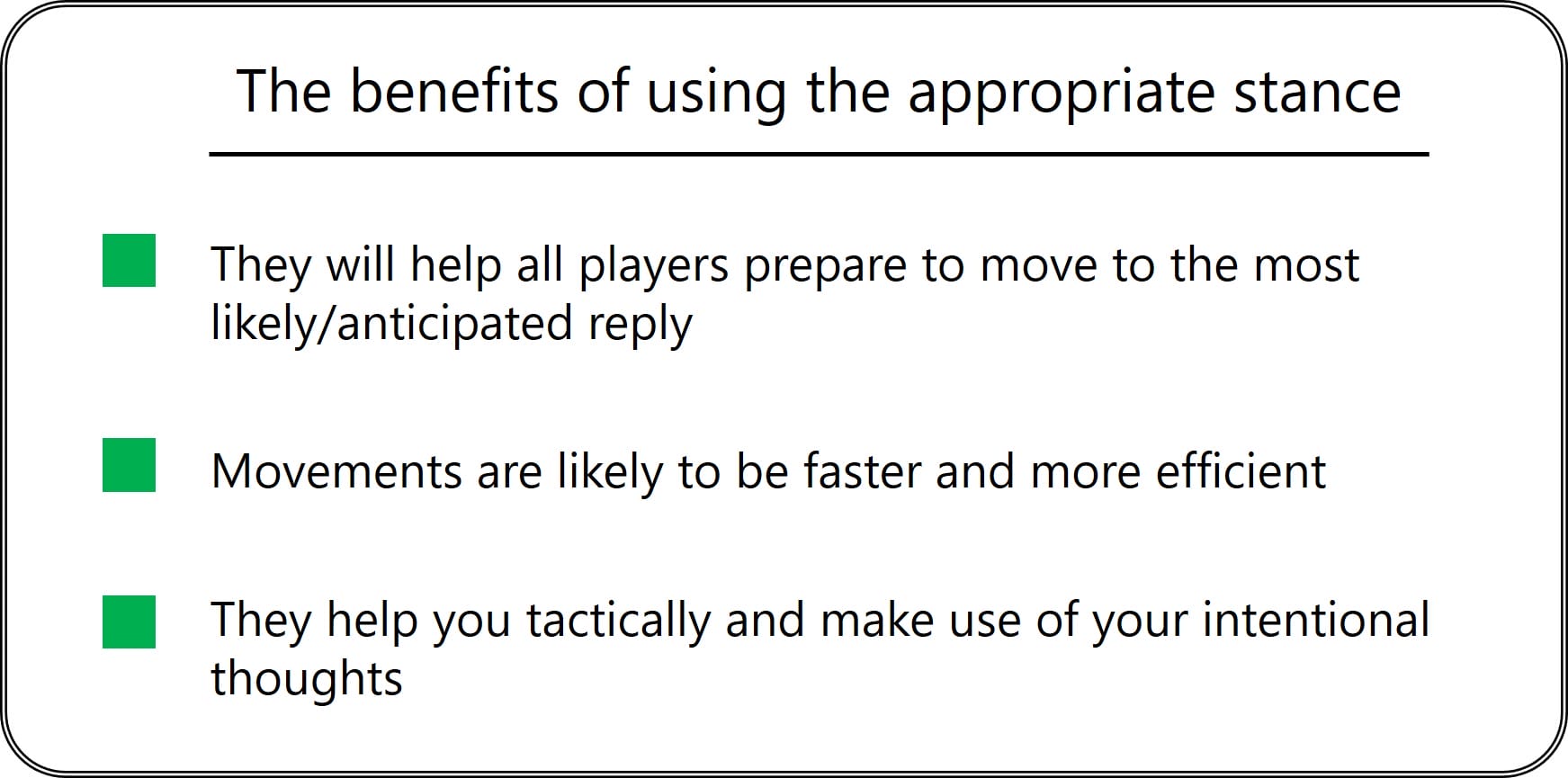
If you want to become a better mover on court, you must be considering the what/when/how of stances
They have a Tactical underpinning (aid anticipatory thoughts)
I’d like you to consider that all these stances offer an opportunity in the rally when the player can move/prepare before the opponent strikes the shuttle. This is based on a tactical choice, more about this later.
There is often (not always) a moment between strokes when a player can, after striking the shuttle, then take up a stance with the intent of affecting what happens next. This is the tactical choice and could be described as anticipatory. Look for these moments in the videos.
My hope is that after reading all 3 parts you will agree that the tactical elements of stances is far more important than the technical components. My wish is that coaches introduce, set up practices and encourage development through a tactical bias, not just repeat or #hashtag the technical points.
Yes, it is important that coaches understand the technical side but in any interactions with players, these should be secondary to the thoughts the player has based on what is happening in the rally.
Do you think you have the skills to coach stances through a tactical bias (lens) in practice?
Could you reduce the amount of technical advice you give in favour of setting great practices
Warning
Stances are taken up before the opponent strikes the shuttle so that players can seek an advantage.
However, the opponent may not play the stroke that the player prepared for. Therefore, it may look as if the player prepared for or anticipated the ‘wrong’ shot but this is not the judgment to make. No error or mistake has been made. I believe that early anticipation using stances is a critical element in seeking efficient movements.
When you initially introduce stances to players I prefer to use the phrase “prepare to cover the opponent’s shot that will hit your court first”. This statement will not explain all the stances promoted here but will act as a simple introduction to the more complex tactical and anticipatory thoughts later. The post below will add more information to explain this.
If you agree and believe that these intentional movements (by adopting one of several stances) can affect a rally, then consider the following question.
How do you allow / encourage for these intentional movements in your coaching?
what practices/situations are you creating?
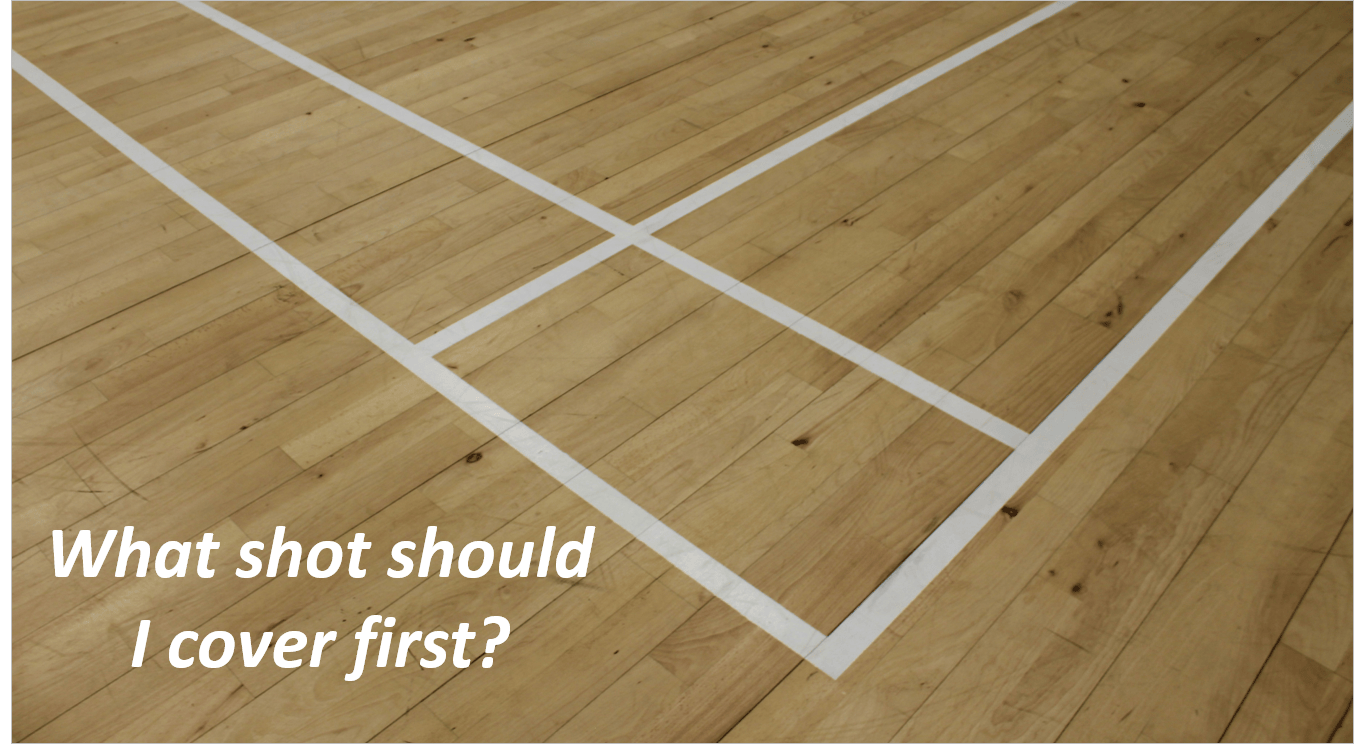
– – – – – – – – – – – – – – – – – – – – – – – –
2) There are 4 Stances
Forward attacking – Racket foot forward, body in a sideways stance, racket height and position is variable.
Backward attacking – Non-racket leg forward, body in a sideways stance, similar to the receive of serve stance, racket height and position is variable
Defensive – Body facing square to the net, legs wider than shoulders, racket height is lower.
Receive of service – Non-racket leg forwards in a sideways stance. Racket height is generally around shoulder to head height.
Forward attacking, Backward attacking, Defensive, Receive of serve
Forward attacking
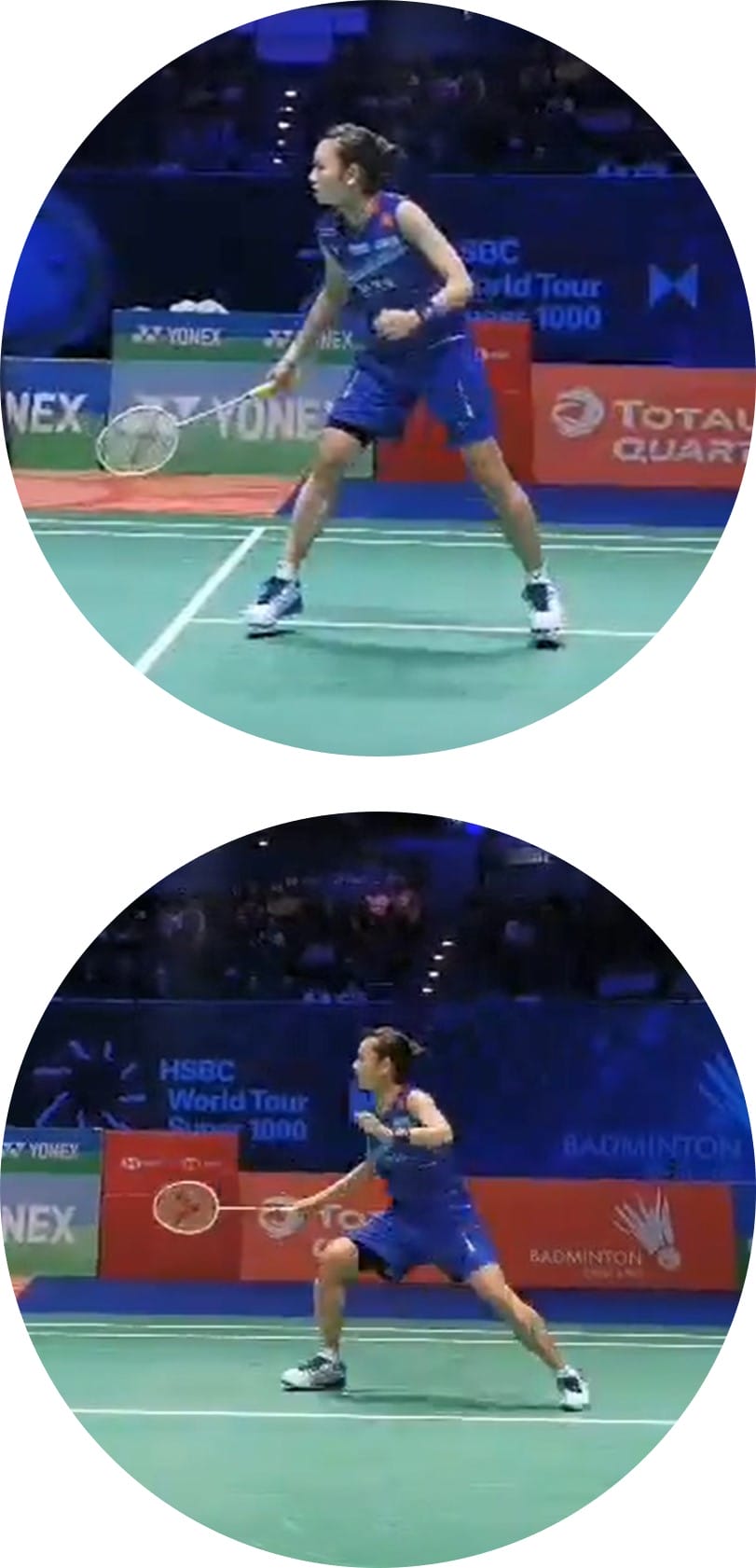 When to Use it – The shuttle at or below tape level, the opponent is unable to hit downwards & hurt you
When to Use it – The shuttle at or below tape level, the opponent is unable to hit downwards & hurt you
If you have watched the video, hopefully, you will agree that this stance is easy to see and used often in rallies.
Look for situations when a defensive block or net shot has been played. It can also be used when the shuttle is pushed deep into the opponents rear court, behind them and the player believes that the opponent is unable to hurt them.
It provides a position for quick forward movement, allows for tactical anticipations, reducing the opponents weapons.
Sometimes players will take up this stance in recovery from a net shot and then it could be argued that it’s just part of the recovery.
- Stance is with the racket leg forward, pointing towards where the shuttle will be struck by the opponent
- Legs wide apart, with knees flexed
- Racket position ‘on alert’, hand cocked
- You could think of it as recovery from one shot or Early Preparation for the next as it’s often a seamless transition
- I like the coaching cue of ‘look like a fencer waiting to attack’
- It can be introduced during early ‘Wallwork’ practices
Backward attacking
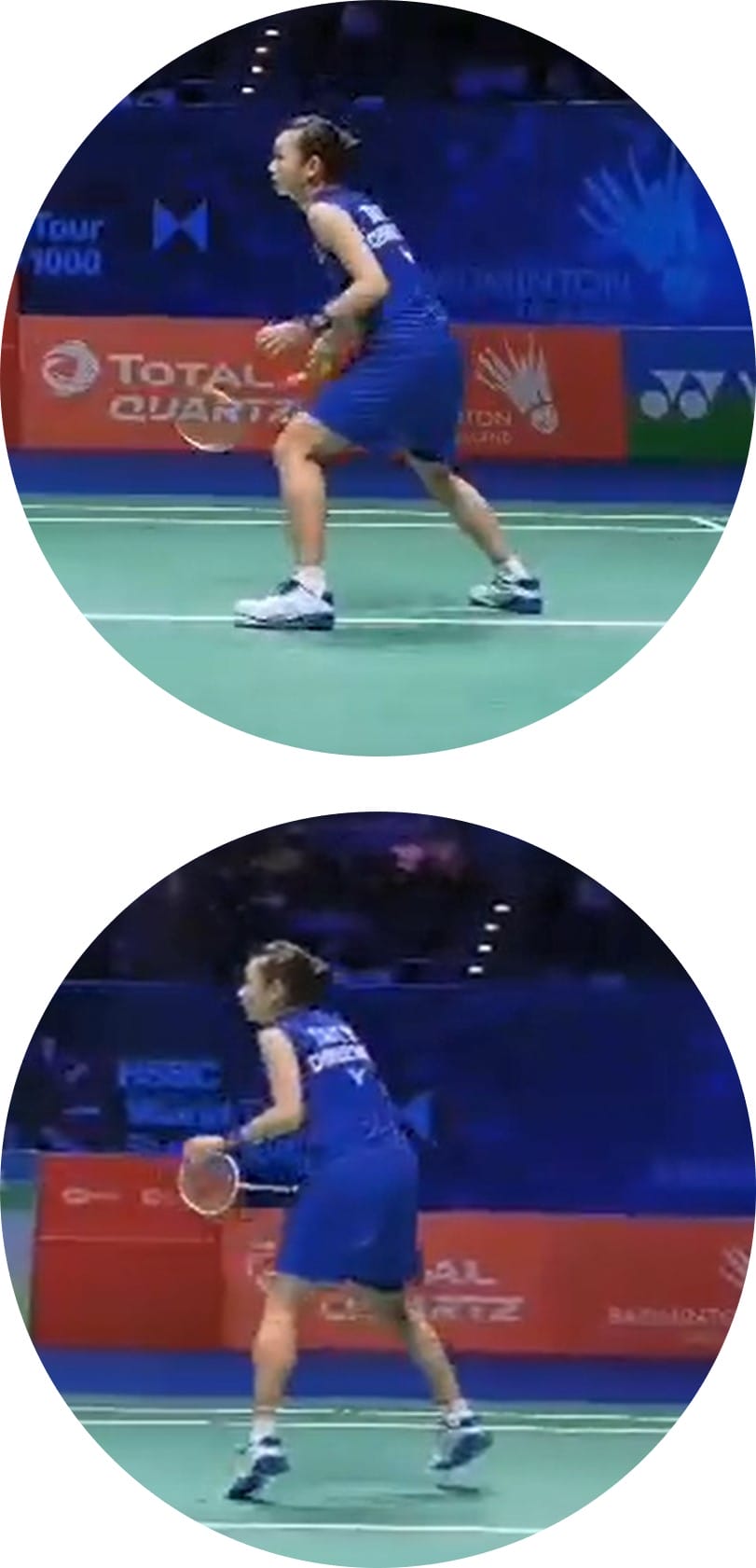 When to Use it – The shuttle at or below tape level, the opponent is unable to hit downwards and the player is anticipating a stroke into their rear court.
When to Use it – The shuttle at or below tape level, the opponent is unable to hit downwards and the player is anticipating a stroke into their rear court.
Fast, attack-minded players who are anticipating a lift and the chance to attack should think about using this stance.
It is most often used as a stance in your backhand frontcourt as an alternative to a forward attaching stance. Again, this is often after playing a defensive block or net shot. As before, the shuttle could also be deep, behind the opponent, with them unable to hurt the player who is anticipating a stroke into their rear court.
It will provide for quick backward movement. As this stance is not as commonly used as the forward attacking stance it may cause your opponent to reconsider their shot if they intended to play a lift.
The backward attacking stance is very similar in appearance to the receive of serve, although it happens within the rally. Not all players will feel comfortable in using this stance as it exposes possible weakness. However, for some players, it’s a great way of exploiting their strengths and causing the opponent tactical difficulties.
It’s this anticipation of an opponent’s lift that often causes players to take up this stance. Most often seen in the backhand side of the court, the stance will allow faster movements into your round the head court. Be aware that your crosscourt net area is now ‘exposed’.
- Stance is with the non-racket leg forward, pointing towards where the shuttle will be struck by the opponent
- Legs wide apart, with knees flexed
- Racket position ‘on alert’, hand cocked
- You could think of it as recovery from one shot or Early Preparation for the next as its often a seamless transition
- It can be introduced during early ‘Wallwork’ practices, although this is not recommended
This stance looks like the Receive of Service and has many, many similarities
Defensive Square
 When to Use it – The shuttle is above the tape and the opponent is easily able to hit downwards
When to Use it – The shuttle is above the tape and the opponent is easily able to hit downwards
It’s probably the easiest of all the stances to see as it certainly appears after a high service and after lifts or clears to the opponent’s rear court.
All players should be comfortable in adopting this stance. Whenever it’s likely that the opponent will hit down hard, adopt this square defensive stance. It’s preparation to cover the shuttle that will hit the court first, i.e. the one with the least amount of time to move to it.
The position enables quick easy sideways movement.
The exact position may vary depending on how wide the opponent is in the rear court and you may have one leg slightly in front of the other. These are subtle (but essential) variations.
- Square is a square-on position, shuttle above the net and could be struck downwards by an opponent
- Racket position ‘on alert’ in front of the body, hand cocked around knee height
- Wide legs, wider than shoulder-width, with knees flexed
- Use imagery to help players: goalkeeper in football, tennis receiver, cricket slip fielder
Unfortunately, it seems to be the only stance that coaches use to start practices.
Even returning to a square stance when the shuttle is below the tape!
Receive of Serve Stance
 When to Use it – As the name suggests, the stance is taken up at the start of a rally, just before your opponent serves. It is very similar to the backward attacking stance described above.
When to Use it – As the name suggests, the stance is taken up at the start of a rally, just before your opponent serves. It is very similar to the backward attacking stance described above.
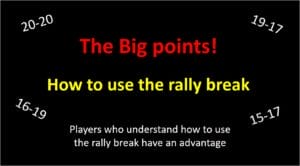 You may not consider it to be part of the movement as the stances are only used at the start of a rally. However, I disagree as it’s an important part of a movement.
You may not consider it to be part of the movement as the stances are only used at the start of a rally. However, I disagree as it’s an important part of a movement.
How players ‘start’ is critical. The stance and all its components (Technical, tactical/mental) ensure that the rally starts in a way that player could maximize their opportunities. There is an art to preparing to receive serve in all the different games (singles, doubles and mixed)
Have you read this article that gives advice and recommendations about how to use the gap in between rallies. Click on the image above.
– – – – – – – – – – – – – – – – – – – – – – – –
In part 2 we will take a look at
3. Stances – when are they used. This will include the Forward vs Backward attacking stance debate
4. Discuss why nearly all stances are anticipatory
5. How to encourage autonomous movements and how to avoid the danger of over emphasising the technical elements
If you have any questions please send me an email and I’ll do my best to help contact@badmintonandy.com
I appreciate all your comments and suggestions, why not send me an email

